The sapota tree (Manilkara zapota), also known as chikoo, naseberry, or sapodilla, is a tropical evergreen fruit tree prized for its sweet, malty, caramel-like fruit. Native to southern Mexico, Central America, and the Caribbean, sapota has spread widely across tropical and subtropical regions, particularly in India, Thailand, the Philippines, and Sri Lanka.
Growing a sapota tree successfully depends heavily on getting the watering right. Too little, and the tree’s growth slows, the leaves wilt, and fruit quality suffers. Too much, and roots can rot, leaves yellow, and the tree becomes vulnerable to disease. So how often should you water a sapota tree? Let’s explore this in depth.
Understanding the Sapota Tree’s Water Needs
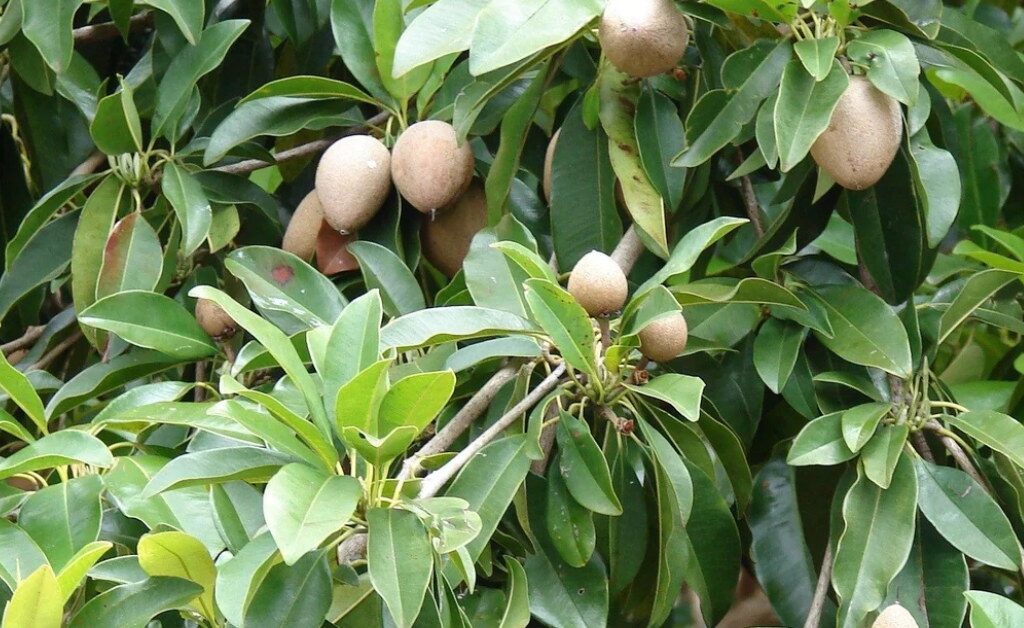
To know how often to water, it helps to look at the sapota tree’s natural background:
- Climate: Warm, tropical, and humid.
- Rainfall: In native regions, rainfall can be moderate to high, but usually with a defined dry season.
- Soil Preference: Well-drained sandy loam or alluvial soils.
- Tolerance: Sapota can tolerate drought better than waterlogging, but prolonged dryness can affect fruit yield.
This means that in cultivation, we aim to provide deep, consistent watering during active growth and fruiting, while allowing the soil to slightly dry between waterings to avoid root issues.
General Watering Guidelines
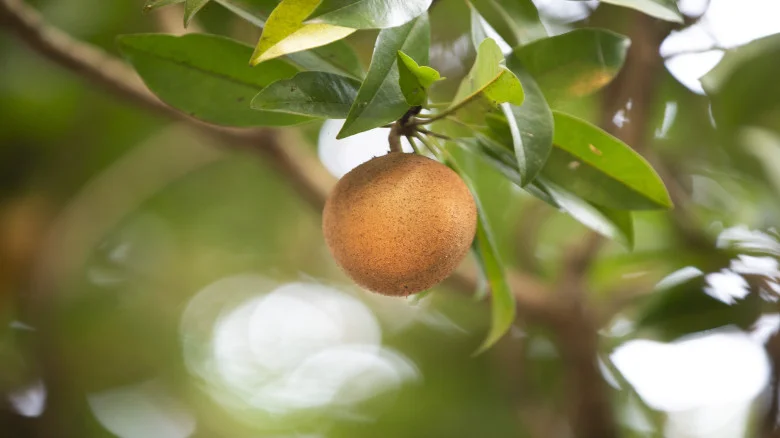
While watering frequency will depend on climate, soil type, and tree age, here’s a basic reference:
- Young sapota trees (0–3 years old): Water 2–3 times a week in dry weather; daily in extreme heat.
- Mature sapota trees (4+ years old): Water every 7–10 days in normal weather; every 5–6 days in hot, dry periods.
- During flowering and fruiting: Increase watering frequency slightly to maintain consistent soil moisture.
Signs Your Sapota Tree Needs Water
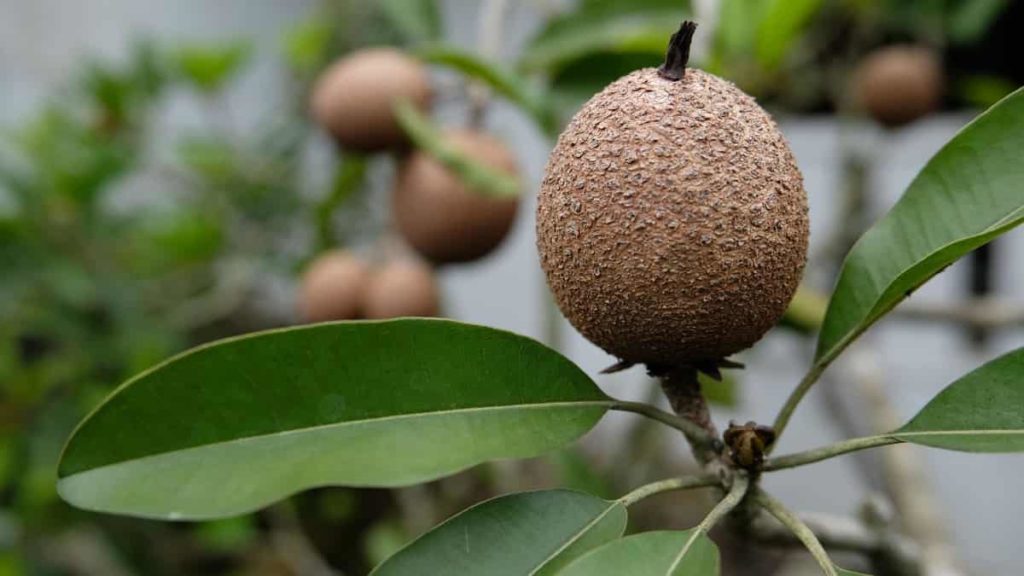
You should never rely only on a calendar; instead, observe your tree and soil.
Indicators of thirst:
- Top 3–4 inches of soil are dry to the touch.
- Leaves droop slightly or lose glossiness.
- Soil appears cracked or pulls away from the base of the trunk.
- Reduced new shoot growth.
Signs of Overwatering
Overwatering is just as dangerous as drought for sapota trees:
- Yellowing leaves (starting from the bottom).
- Soft, blackened roots (root rot).
- Musty or foul smell near the root zone.
- Fruit drop due to stressed roots.
The Best Watering Method for Sapota Trees
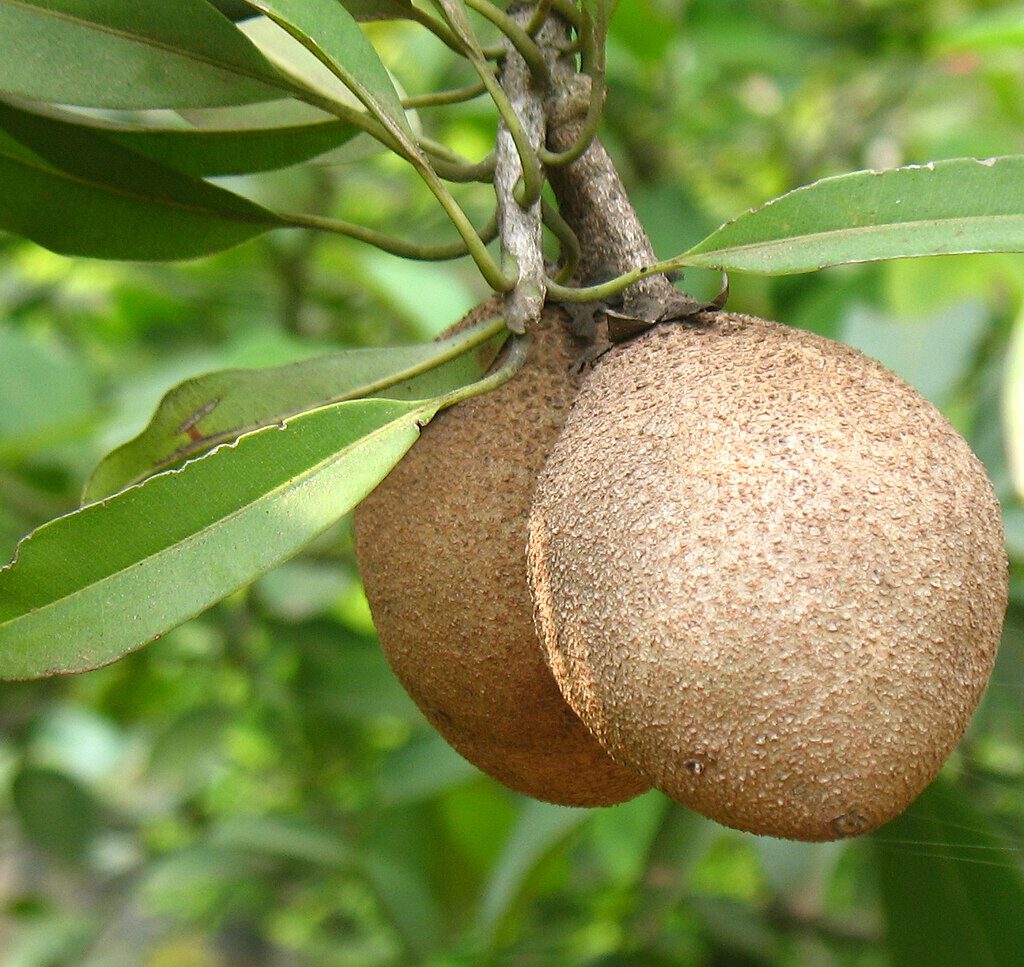
- Deep Soaking Method
- Water thoroughly so moisture reaches at least 2–3 feet deep into the root zone.
- This encourages deeper root growth, improving drought resistance.
- Basin Irrigation for Young Trees
- Create a shallow circular basin around the trunk (about 2–3 feet in diameter) to hold water and prevent runoff.
- Drip Irrigation for Mature Trees
- Provides slow, steady moisture directly to the root zone.
- Saves water and reduces weed growth.
- Mulching
- Apply organic mulch (dry leaves, straw, compost) around the base to retain moisture, reduce evaporation, and improve soil health.
Seasonal Watering Schedule
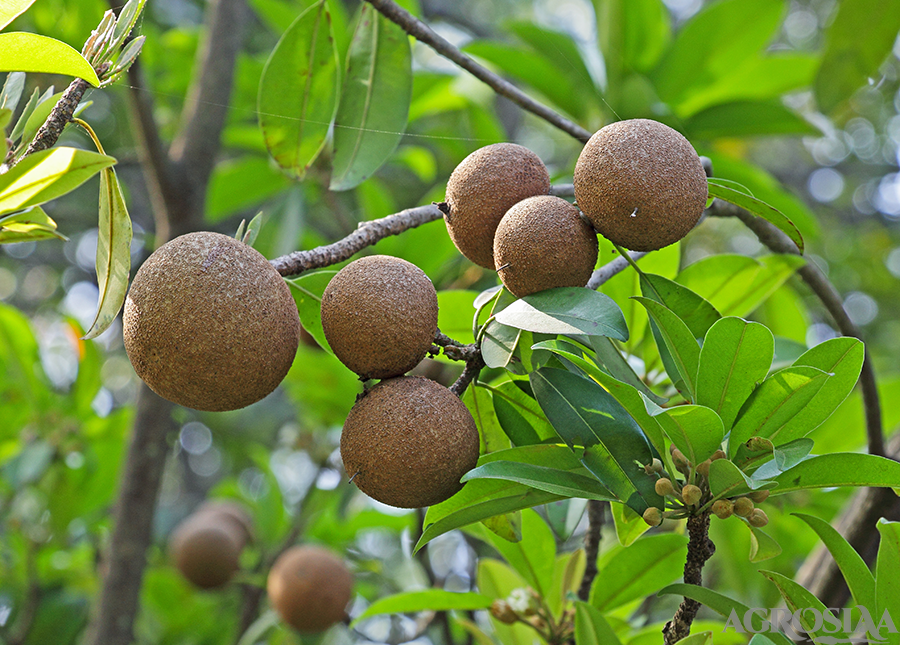
| Season | Young Trees (0–3 years) | Mature Trees (4+ years) | Notes |
|---|---|---|---|
| Spring | Every 2–3 days | Every 7 days | Active growth begins; avoid water stress. |
| Summer | Daily or every 2 days | Every 5–6 days | High heat → higher water demand. |
| Monsoon | Rarely needed | Rarely needed | Only water if there’s no rain for over a week. |
| Autumn | Every 3–4 days | Every 8–10 days | Prepare for fruiting season. |
| Winter | Every 4–5 days | Every 10–12 days | Lower evaporation; reduce watering slightly. |
Watering During Flowering and Fruiting
Sapota trees typically flower twice a year (depending on climate) and fruit takes about 9–10 months to mature. Watering during this period is critical:
- Flowering Stage: Maintain slightly moist soil to prevent flower drop.
- Fruit Development: Water deeply and consistently to ensure fruits grow to full size and sweetness.
- Pre-Harvest: Avoid heavy watering right before harvest to prevent fruit splitting.
Factors That Affect Watering Frequency
1. Soil Type
- Sandy soils drain quickly → require more frequent watering.
- Clay soils hold moisture longer → water less often but monitor for waterlogging.
2. Climate
- Tropical/humid: Less frequent watering due to slower evaporation.
- Dry/arid: More frequent watering required.
3. Tree Age
- Young trees have shallow roots and need frequent watering.
- Mature trees have deep roots and can handle longer intervals.
4. Mulching and Shade
- Mulch reduces evaporation.
- Partial shade can lower water needs.
Best Practices for Healthy Sapota Irrigation
- Morning Watering: Reduces evaporation and ensures the tree has moisture during the hottest part of the day.
- Avoid Leaf Wetting: Water directly at the soil to prevent fungal diseases.
- Regular Monitoring: Use a soil moisture meter for accuracy.
- Water Quality: Use clean, non-saline water; sapota is sensitive to salt buildup.
Common Watering Mistakes
- Frequent Light Watering
- Encourages shallow root growth and weak drought resistance.
- Watering Without Checking Soil
- Leads to overwatering and root diseases.
- Ignoring Seasonal Changes
- Water needs are highest in summer, lowest in winter.
- Watering During Heavy Rain
- Adds unnecessary moisture and risks root rot.
The Role of Irrigation in Commercial Sapota Farming
In large-scale cultivation, drip irrigation has become the preferred method. It:
- Conserves water by delivering it directly to the root zone.
- Reduces weed growth.
- Allows for fertigation (fertilizer delivery via irrigation water).
Studies show that drip-irrigated sapota trees have higher yields, better fruit quality, and more uniform growth compared to flood irrigation.
Conclusion: It’s About Consistent, Deep Hydration
So, how often should you water a sapota tree?
There’s no single answer — it depends on age, climate, soil, and season. The key is deep, infrequent watering that allows the topsoil to dry slightly before the next irrigation.
For young trees: water every 2–3 days in hot weather.
For mature trees: water every 7–10 days under normal conditions, adjusting during heat waves or rainy periods.
By learning to read the signs from your tree and combining that with seasonal adjustments, you can grow a healthy, high-yielding sapota that provides sweet, delicious fruits for years.
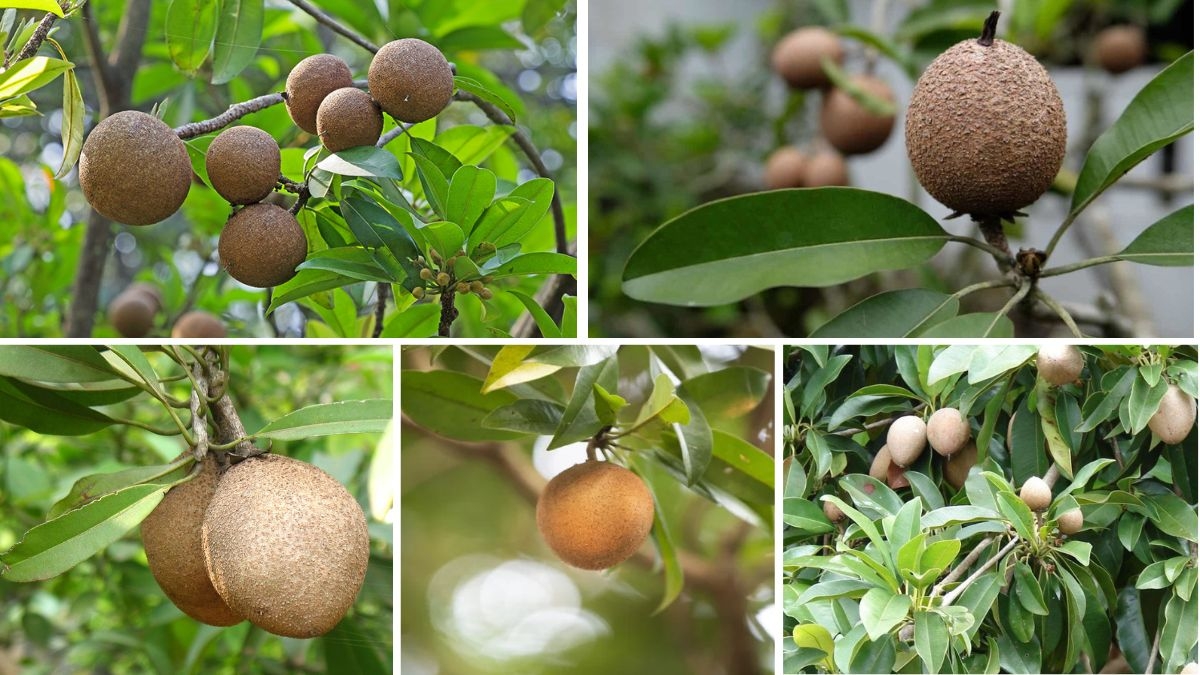





Leave A Comment